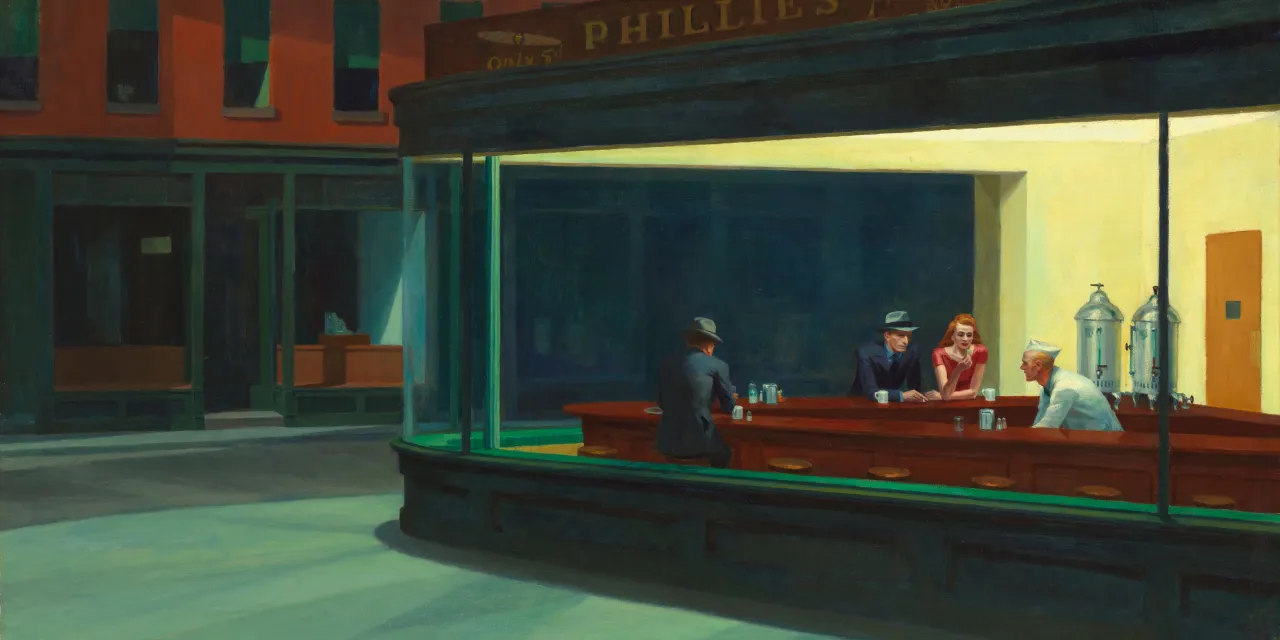Litblog Roundup 40

Litblog Roundup is a bi-weekly overview of topics, trends and highlights from the literary Internet. In this roundup: a look at subjective things like loneliness, authenticity, and more.
Loneliness
Loneliness, of course, is fundamental to the human experience—and who better to explore that particular subject than writers. Two recent books use different approaches to try to figure it out. In Melissa Broder’s So Sad Today, the poet behind the popular Twitter account of the same name uses confessional writing to address her own neuroses. In Olivia Laing’s The Lonely City, the journalist and critic fuses her own personal story of living in New York with the lives of artists who have tackled loneliness in their work, including Edward Hopper, David Wojnarowicz, and Andy Warhol. The irony of loneliness, of course, is it that it’s an isolating experience that many people (and especially writers) are unified by. So why, then, is it so hard to write about? Writers, the Lonliest Artists of All by Michele Filgate
Authenticity
In the 1960s it was easy to start a conversation about life, culture, and music by asking, “are you a mod or a rocker?” Nowadays it might be as easy to ask “Are you ironic or are you authentic?”
In “E Unibus Pluram,” David Foster Wallace imagines a “new kind of rebel,” committed to sincerity, rather than cool: “Real rebels, as far as I can see, risk things. Risk disapproval … risk the yawn, the rolled eyes, the cool smile, the nudged ribs…” In other words: if my friends were hip and nonchalant, then at least I could be open, committed and honest. … Indeed, it’s easy to see that much contemporary cool culture has already made the irony-sincerity dialectic into its self-conscious subject matter. The fashion style “normcore,” which reached peak media visibility in 2014, claimed to be cool precisely because its practitioners had transcended the effort to look cool. Virtually every friend who heard I was writing this review had multiple other examples ready at hand. One tried to persuade me (with great passion) that “ironically liking,” say, Justin Bieber is not a cynical gesture but a sincere and affirming one; another explained that “fabric art” is “about” the tension between irony and sincerity. You’d be forgiven for finding each of these examples a little obscure, but the point is to underscore how sincerity has already been fully incorporated into the lexicon of a particularly rarefied version of contemporary cool. The conflict between irony and sincerity has become just one more thing to ironize. Here, of course, we meet the inherent challenge of analyzing a concept like “cool,” whose entire purpose is to stay one step ahead of anything a college professor might say about it. Beyond Cool? by Katie Fitzpatrick
Discernment
The annual Hugo awards for the best science fiction of the year have once again been riven by controversy, as a concerted campaign by a conservative lobby has dominated the ballot. The Sad Puppies and Rabid Puppies movements, which both separately campaign against a perceived bias towards liberal and leftwing science-fiction and fantasy authors, have managed to get the majority of their preferred nominations on to the final ballot, announced today. This means that voters on the prestigious awards will now be choosing from a shortlist which includes SJWs Always Lie, an essay about “social justice warriors” by Rabid Puppies campaign leader Vox Day; a self-published parody of erotic dinosaur fiction called Space Raptor Butt Invasion, by Chuck Tingle; and My Little Pony cartoon The Cutie Map. Hugo awards shortlist dominated by rightwing campaign by David Barnett
Half-Life
It has been 30 years since the fateful accident at the Chernobyl nuclear power plant. It will be 20,000 years until its effects are gone. Chernobyl is a unique subject that writers have struggled with ever since it happened.
Thirty years ago, the sky glowed at the edge of Ukraine. An ill-conceived and bungled safety test had gone critical at the Chernobyl nuclear power plant. Steam explosions blew the roof off Reactor Number Four, spewing uranium and graphite into the open air, and pouring radioactive particles into the atmosphere. The fire burned for days while Soviet authorities delayed evacuating the surrounding area, needlessly exposing thousands to the worst technological disaster of the 20th century. A radioactive cloud drifted over Europe, with particles eventually appearing in every corner of the world. Strontium, cesium, plutonium—all were present in the vast fallout area, out of which was carved a forbidden 30-kilometer landscape known as the Zone. Since then the Zone has spawned a literary genre of its own. Indeed, it seemed instantly to pass into myth, even possessing its own poetic language. The soldiers and firefighters who cleaned up the site—many of whom died from exposure—are referred to as the liquidators. Reactor Four remains encased in a concrete-and-steel shell known as the sarcophagus. In the Zone, there is a Red Forest; there was black rain. Yet unlike myth, as a professor says in Voices From Chernobyl, a 1997 oral history by Svetlana Alexievich, “We don’t know how to capture any meaning from it.” Through three decades of literary response, Chernobyl has undermined the sort of authoritative depiction that might bring closure. But something closed can be forgotten. The finest works express profound doubts about the power of language to absorb a disaster of this magnitude, and so continually reopen it to new ways of being remembered. Chernobyl’s Literary Legacy, 30 Years Later by Michael Lapointe